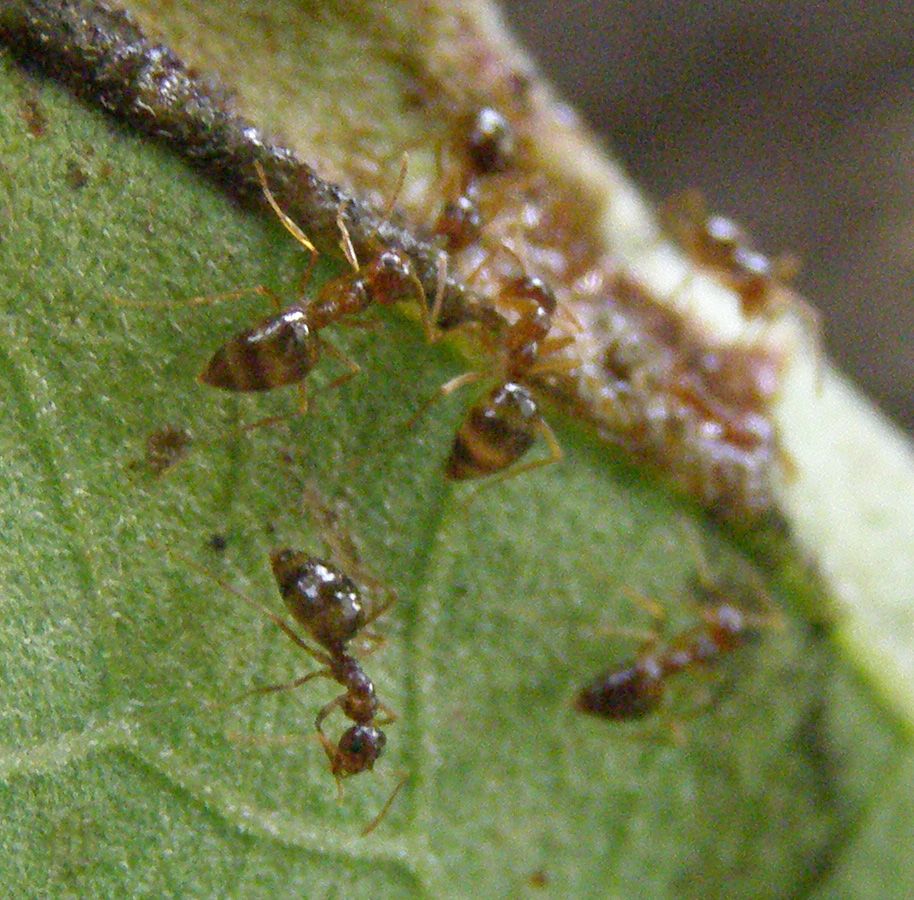
The Winter Ant, Prenolepis imparis, has the advantage when it comes to foraging in the Fall, Winter and Spring. Any day where it's above freezing out these ants are able to forage carefree. They can do this because every enzyme in their body is built to work in cold temperatures.

The food source at this time is usually tree sap. In this case damaged sunflowers. Colonies don't get horrible huge, maybe 12,000 ants. But their colonies can be abundant. Their ability to forage during the warmer parts of winter puts them on a whole different level. They go dormant over the summer when there's more competition for food. But during the winter they're likely the only species foraging.

The Pest Control industry has deemed them The Small Honey Ant or False Honey Ant. Treating colonies is easily done. But frankly why would you want to? They're not an indoor pest as far as I know. I have colonies all over my yard and have never seen so much as a worker wonder inside (that wasn't from a colony I had in captivity,) and they're don't do property damage. They can make a mound but it's not above the grass line. I could understand if your lawn was nothing but moss or a putting green but you really have to hate ants.
Look for their brightly colored queens on the first warm day or two of March and April in the late afternoon. (I've seen flights as early as February 11th but March is more common.)